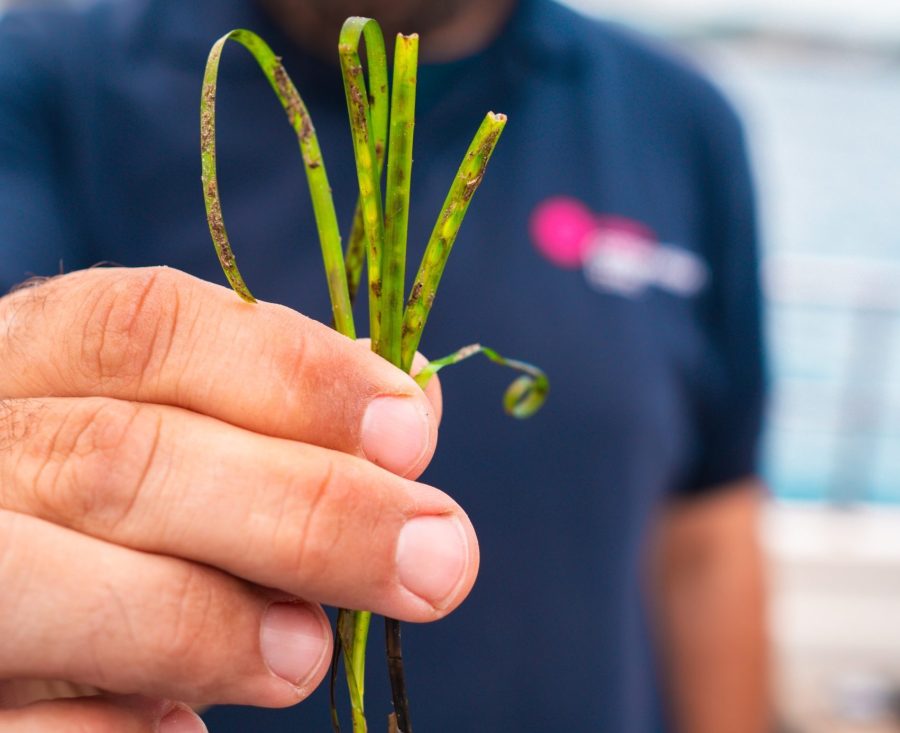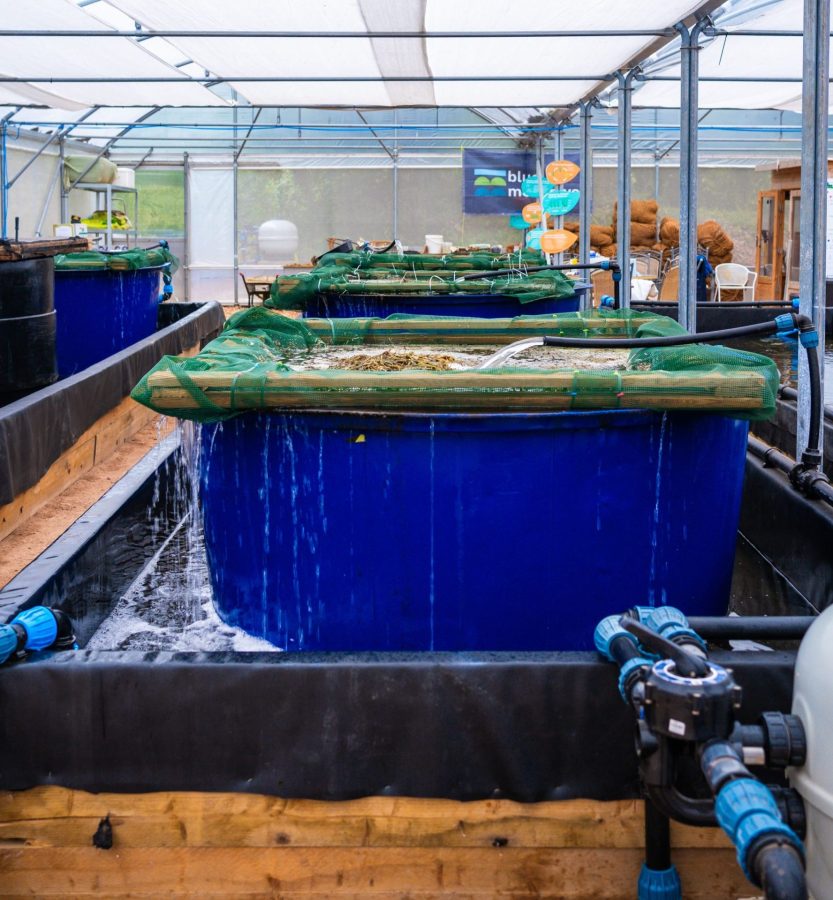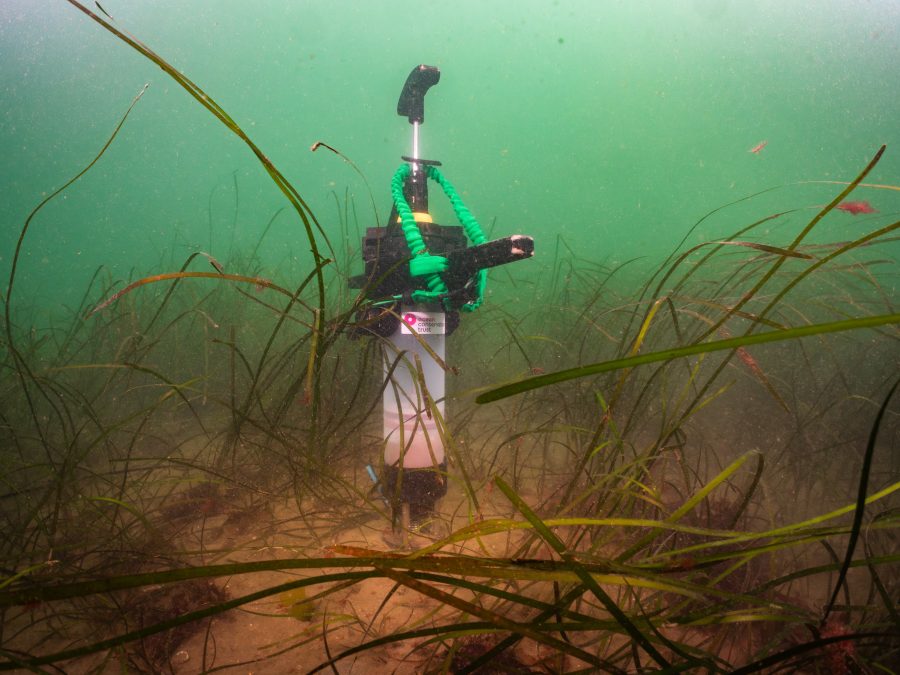Restoration
We are working on refining a holistic process to enable large-scale seagrass restoration, using multiple techniques.
Over the next 10 years, we are aiming to restore 50 hectares of seagrass, as well as build capacity so that each year we can restore more than 50 hectares of seagrass.
Our seagrass restoration work is a vital part of the Blue Meadows approach. Scaled restoration of seagrass meadows is hampered by multiple factors, including lack of seeds, poor germination rates and plants only flowering once a year. Our research and development programme aims to tackle these problems and enable large scale restoration of this important habitat, across the southwest and beyond.

Seed collection
Seagrass is the only underwater, flowering plant, and thanks to their flowers, seagrasses can make seeds by fertilisation. The seeds develop inside small, pod-like structures called spathes, and as they mature, they are released and carried away by currents. Seagrass only produce seeds once a year, and the timing can vary between locations, so it’s crucial that we collect them at the right moment, as having seeds to plant is vital for our restoration efforts!
Our dive team head to different sites across the Southwest for seed collection. They are specially trained to look for flowering seagrass shoots, which stand nice and tall within the seagrass meadows and have pod-like structures containing the seeds. The divers gently harvest the seeds by hand, taking care not to damage the surrounding plants. The collected shoots are then brought to shore, where the seeds are separated and processed for storage, being kept in a dormant state until we are ready to use them.

Cultivation in the National Seagrass Nursery
To support our restoration work, and be pioneering in nature recovery, we have constructed the largest seagrass growing facility in England, the National Seagrass Nursery. It’s a 400 square metre, purpose-built facility for plant aquaculture, where we are able to cultivate healthy seagrass plants from seed.
Automated water abstraction, advanced filtration of circulating water and enhanced climate control to maintain optimum growing conditions. allow us to grow seagrass all year round in the nursery. Currently, the National Seagrass Nursery has the capacity to grow 7,200 plants each year. With further planned expansions, that number could double to 14,400 annually. Each plant cultivated and cared for in the nursery is replanted into one of our restoration sites across the southwest.
Seedling translocation
Whilst working on refining a holistic process for seagrass restoration, we have developed Seagrass Mat Technology. By planting seagrass seeds into sand on 100% biodegradable mats, we are able to grow seagrass plants within our nursery site, and then translocate them into our restoration sites.

Hydro Marine Seeding
Hydroseeding on land is a planting process to spread seeds rapidly, particularly to help fight erosion. Taking inspiration from this, we sought to develop Hydro Marine Seeding (HMS) as a technique to inject seagrass seeds directly into the seabed. So, we developed a purpose-built deployment device for use by our commercial divers.
The spring-loaded handheld device is called HMS OCToPUS (Ocean Conservation Trust o Pressurised Underwater Seeder). It has a 1.5 litre chamber, that is filled with Zostera marina seeds, suspended in a specialised carrying media. One OCToPUS unit can be used to inject 2,000 seagrass seeds in under 20 minutes, in just one dive, by one diver.


















